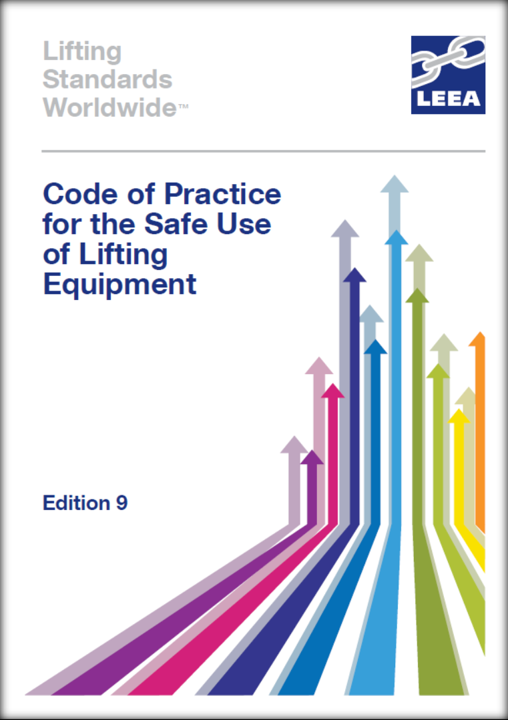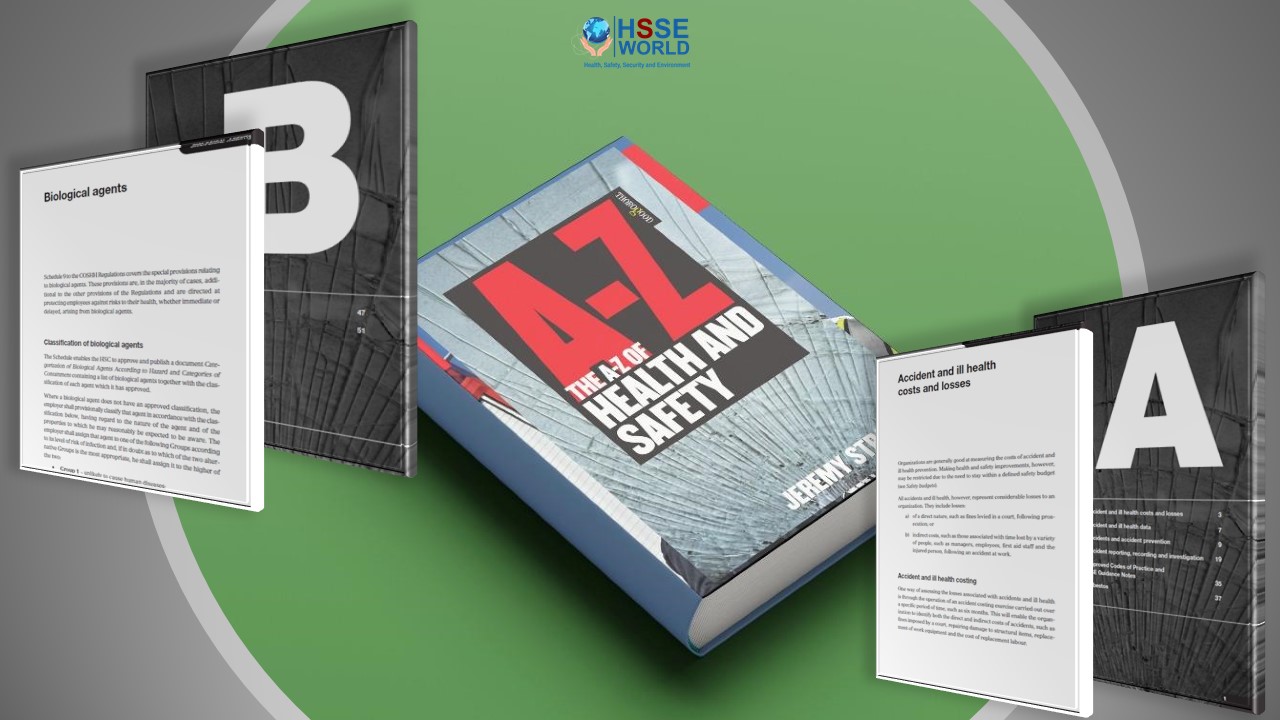LEEA’s Code of Practice for the Safe Use of Lifting Equipment (COPSULE) provides expert guidance on safe lifting practice. The ninth edition was published in November 2019.
- Comprehensive guidance
- Easy to use – full index for quick reference
- Authoritative – written by industry experts
- Up to date – revised to incorporate current industry practice
- Globally applicable
The COPSULE is a practical guide for operating, maintenance, training, and purchasing procedures relating to lifting equipment. It identifies and addresses the common causes of lifting and handling accidents, promoting safer working practices, and helping to ensure all staff in positions of responsibility comply fully with relevant health and safety legislation.
Based on LEEA’s impartial, in-depth expertise and experience, the COPSULE covers both the general issues applicable to all lifting and handling operations and a wide range of specific equipment types. These include manual and power-operated chain blocks and hoists, winches, girder trolleys, clamps, slewing jib cranes, runways, mobile gantries, jacks, slings, shackles, eyebolts, lifting beams, spreaders and frames, and electric overhead traveling cranes.
The benefits of the Lifting Equipment Engineers Association are not confined to its members. When dealing with member companies the user can be confident that they are dealing with organizations that are capable have adequate facilities for the work they undertake and that the personnel concerned are qualified to do their jobs.

The Code of Practice for the Safe Use of Lifting Equipment is aimed primarily at the user organization rather than the individual user. To complement the Code of Practice, the Association has also published a User’s Pocket Guide aimed at the individual person who uses the equipment and is intended as a working tool carried in the pocket as an immediate source of reference.
It was written to help the user meet the legislative requirements. In particular, it gives guidance on planning the lifting operation including the generic ‘nine points’ plan which can be used for all routine lifting operations and as the basis for developing more comprehensive plans for complex operations.

It summarises in three parts the most relevant information for the inspection and safe use of a wide range of lifting equipment.
Part 1 provides:
- A detailed lifting procedure covering general lifting operations, and which can be used as the basis for specific operations.
- Guidance on the selection and use of lifting machines and supporting structures
- Guidance on the selection and use of lifting accessories
Part 2 provides: - Twenty specialized sections each dealing with a particular type of lifting equipment
- The key points to be observed for the safe use and in-service inspection of each item of equipment.
Part 3 provides: - Information about the Code of Practice for the Safe Use of Lifting Equipment
- A glossary of terminology
- Illustrated crane signals
- Guidance on load estimation – weight and center of gravity
- A comprehensive index
- An angle guide.
Contents
The content of Code of Practice for the Safe Use of Lifting Equipment – Edition 9
- Definitions
- Legal requirements
- Principles for the selection of lifting equipment
- Information to be exchanged between the user and designer/supplier
- Marking, storage, and handling
- In-service inspection
- Safe use of lifting equipment
- Training
- Recommended crane signals
- Load estimation – weight and center of gravity
- Load security – balance and stability
- Structures
- Principles for the selection and use of multipurpose slings
- Principles for the selection and use of lifting appliances
- Planning the lifting operation
- Guidance on written schemes of examination
Download the book
Code of Practice for the Safe Use of Lifting Equipment – Edition 9
More Downloads
- E-Books: Healthcare Hazard Control & Safety Management
- E-Books: Safety, Health and Working Conditions Training Manual
- E-Books: Energy Efficiency in Water and Wastewater Facilities
- E-Books: Fire Service Features of Buildings and Fire Protection Systems
- E-Books: Evaluation of Fire Safety free download
- E-Books: PPE for Chemical, Biological, and Radiological Hazards free
- E-Books: Changing the Workplace Safety Culture free download
- E-Books: Site Emergency Planning Workbook
- E-Books: Load Restraint Guide
- E-Books: Essential Practices for Creating, Strengthening, and Sustaining Process Safety Culture
- E-Books: System Safety Engineering and Risk Assessment
- E-Books: Permit-Required Confined Spaces
- E-Books: Is it Safe to Enter Confined Space?
- E-Books: 5-Minute Workplace Safety Talks
- E-Books: Safety Culture and High-Risk Environments
- E-Books: Practical Guide to Industrial Safety
- E-Books: Slip, Trip, and Fall Prevention for Healthcare Workers
- E-Books: Health and Safety at Work Key Terms
- E-Books: Fundamentals of Process Safety Engineering
- E-Books: Gas Detection Hand Book
- E-Books: Occupational health and safety management systems ANSI-AIHA-z10-2012
- E-Books: Hot Work on Drums and Tanks
- E-Books: Human Fatigue Risk Management
- E-Books: Guidelines for the provision of facilities and general safety in the construction industry
- E-Books: Handbook of Training in Mine Rescue and Recovery Operations ( 2021)
- E-Books: Code of Practice for the Safe Use of Lifting Equipment – Edition 9 (Nov 2019)
- E-Books: Free Forklift Health and Safety Best Practices Guideline
- E-Books: Handbook of Hazardous Chemical Properties
- E-Books: Human Performance Improvement through Human Error Prevention
- E-Books: Principles Of Fire Risk Assessment In Buildings
- E-Books: Investigation of Occupational Accidents and Diseases
- E-Books: Radiation Protection and Safety in Industrial Radiography
- E-Books: Basic Guide to System Safety, Third Edition
- E-Books: Food Safety Management-A Practical Guide for the Food Industry
- E-Books: Safety identification: Escape and evacuation plan signs- ISO 23601
- E-Books: Safety at Work
- E-Books: The Safety-Critical Systems Handbook 4th edition
- E-Books: Fundamental principles of occupational health and safety
- E-Books: Fire Safety Risk assessment Guide – Sleeping Accommodation
- E-Books: Mental health at work series
- E-Books: Live Fire Training: Principles and Practice
- E-Books: Pre-Startup Safety Review Guide
- E-Books: Fire and Emergency Drill Manual and Building Inspection Guide
- E-Books: Health and Safety: Risk Management 5th edition
- E-Books: Fire Protection systems -Third edition 2021
- E-Books: Fire Safety Logbook templates
- E-Books: From Accidents to Zero
- E-Books: Electric Safety Practice and Standards
- Your steps to chemical safety
- E-Books: Ergonomics and Psychology Developments in Theory and Practice
- E-Books: HAZOPS Should BE fun-The Stream-Based HAZOP
- E-Books: Safety Health and Environmental Auditing
- E-Books: A Quick Guide to Health and Safety
- E-Books: Occupational Ergonomics A Practical Approach
- E-Books: Job Hazard Analysis A Guide for Voluntary Compliance and Beyond
- E-Books: Electrical Safety of Low Voltage Systems




